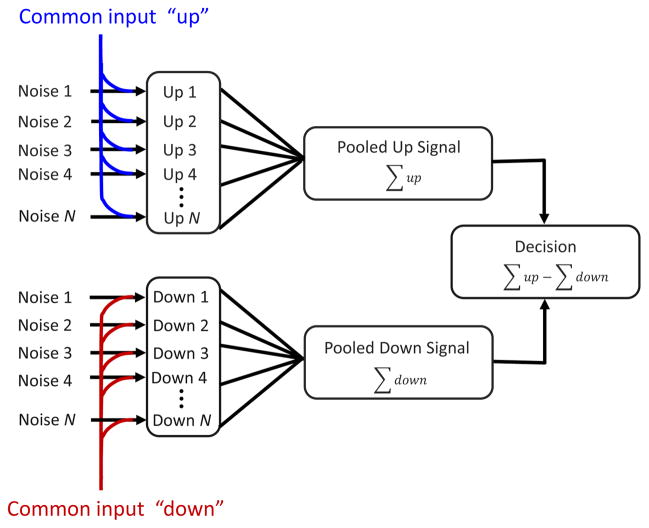Figure 1.
A simple scheme that produces the structured correlations required for CP in pooling models. The response of each neuron on any trial is the sum of two terms – a noise term that is independent for each neuron, and a common input that is the same for each neuron within a pool. The common inputs produce uniform positive noise correlations between pairs of neurons within a pool, but no correlation between pools. As N becomes large the pooled signals become dominated by the common input terms, since the independent noise terms tend to cancel. Thus the choices of the model (whether pooled up > pooled down) are largely determined by the common input terms. These therefore also determine CP in the model neurons. This property of linear pooling models remains true regardless of what gives rise to the common input terms. Whether these reflect noise in afferent neurons, or feedback from higher areas makes no difference.

